A Restoration Tale: Ruminants Small and Large Help Regenerate Depleted Prairie
See how a researcher and his family restored soil health, native grasses and diverse forages to abused and neglected land. Today, herds of sheep, goats and now bison continue the process as they graze under regenerative management.
When Kevin Lynch bought a dilapidated dairy farm in southern Oklahoma in 2011 it epitomized the need for regenerative management.
“When I first bought my place, it was in bad shape,” says Lynch, an agricultural research associate with the Noble Research Institute. “Bare soil, nothing but weeds, no grass hardly at all. It had definitely been abused.”
Back then, “regenerative ranching” – today central to the mission at Noble — wasn’t in his vocabulary. Now, 12 years later, Lynch can say he’s seen first-hand how using ecological processes has restored his degraded grazing lands.
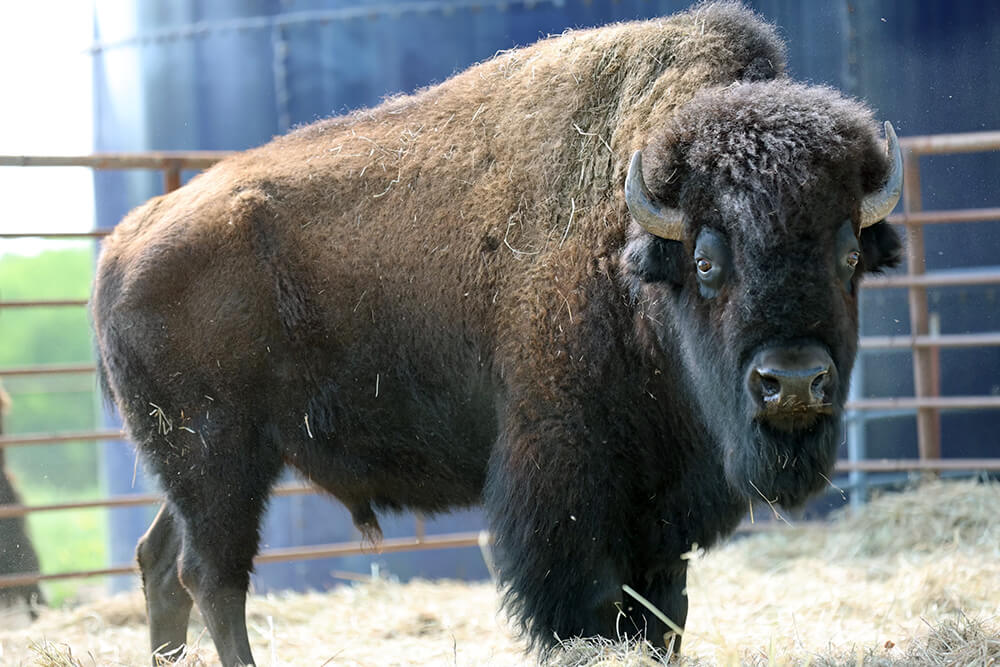
Starting small then going big
Lynch’s primary livestock of choice for the past 30 years has been small ruminants. When he went home each day from his job at Noble studying small grains and grasses, he applied what he learned to how he grazed his sheep and goat herds. Over the years, he developed his land into pastures with a variety of cool- and warm-season native and introduced grasses. More recently, he began incorporating cover crops to add even more diversity above and below ground.
When his son, Dusty Baker, began looking to transition from a decade-long career as a teacher and coach in 2018, they made plans to add more diversity to the land, this time in the form of a less-common large ruminant: bison.
They started with five bison at Lynch’s place and put together working facilities to accommodate the larger animals. After years of developing the soil and grass, they implemented a three-pasture rotational system to use the variety of plants available. In the past three years, Lynch says he’s stopped using commercial fertilizer completely, a move he attributes to the use of cover crops to maintain a living root in the soil at all times, and to carefully managed grazing. He’s also seen marked improvements in his soil’s organic matter.
In 2021, Baker and his wife, Marisa, bought an additional acreage and started using the regenerative process themselves.
“When we got here, there was a lot of woody encroachment on this property,” Baker says. “Wild blackberry, lots of cedar, lots of dead growth that had been sitting there for a while. The goal was to open the prairie up and let the native plants come back in.”
In October 2022, Baker oversaw a prescribed burn on 70 acres of the new property, a targeted disturbance to help kick-start ecological processes. Once the new grass reached the minimal post-burn height requirements, the now 50-bison herd began grazing it in late spring, 2023, as part of the grazing management plan.
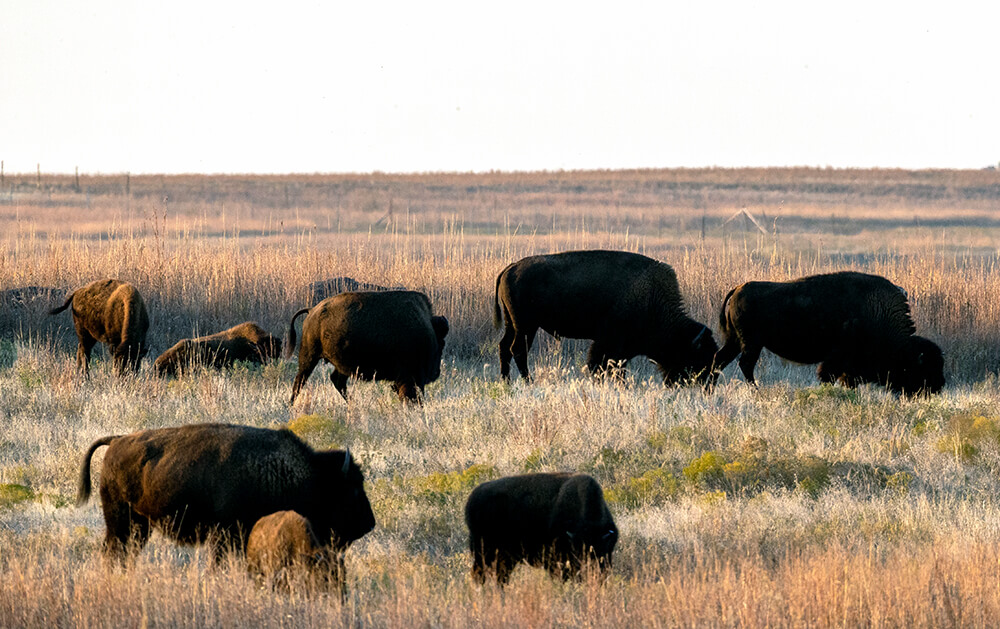
Managing bison grazing with the basics
Managing grazing for bison is not much different than for cattle, sheep or goats, Lynch says. The planning still hinges on observation and adaptation.
While bison and cattle have similar forage requirements in terms of the amount of forage required by one animal unit for one month (animal unit month), Lynch says bison grazing habits are more akin to those he’s observed in sheep or goats.
“Bison are certainly more of a variety grazer. They like tall or short grasses as their primary diet, but they will also eat a lot more forbs and other growth as it’s available,” Lynch says. “They do get out there and go. They don’t tend to camp out on the ‘candy’ grass like a cow will if you let them.”
Their big hooves aerate the soil and pump seeds into the ground, and they leave behind plenty of recycled nutrients. Still, the adage, “It’s not the cow, it’s the how” rings just as true for bison as it does for any other livestock.
“You still have to have the right stocking rates and the right grazing systems and the right management in place,” Lynch says. He measures forage availability before pasture moves to assess proper turnout timing.
One challenge with bison is the equipment needed to handle them, including a larger chute with a crash gate, sturdy working facilities and a walled-in stock trailer. Fencing is not as big an issue as some might assume. Baker says they’ve found six strands of barbed wire on 7-foot T-posts will do the job, and he knows other bison ranchers who can safety do with less.
On the other hand, he sees a reduction in hands-on labor as the benefit on the other side of the equation.
“Bison are an extremely hardy animal. You don’t have to worry about them in the winter, you’re not out pulling calves,” Baker says. “God made a very tough animal here, and a unique one, that has helped manage this landscape for a long, long time. With our practices, they can keep doing what they’re best at.”
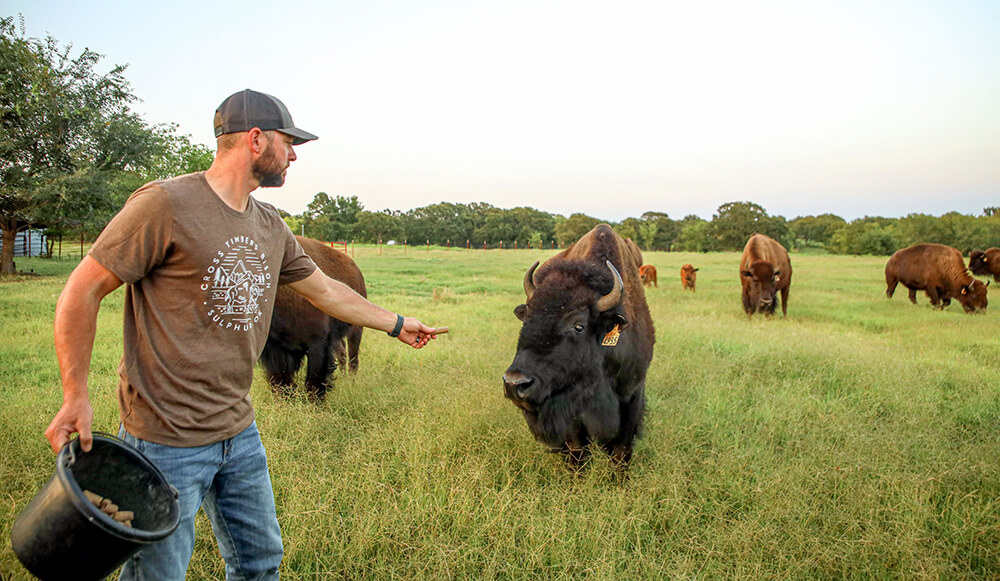
Building diverse businesses
Baker gained experienced working with bison years ago, working at the Chickasaw National Recreation Area near his hometown of Sulphur, Oklahoma. He learned about caring for the animals and their natural behaviors, but he also picked up another important realization: the public is extremely interested in these animals.
“We really saw a niche,” Baker says. “People are very curious about bison. They like to see them out here, and it can be hard to find bison meat in the store.”
The Bakers started a YouTube channel in 2019 for their Cross Timbers Bison Ranch, followed by other social media platforms to share information about their ranch and the animals. Over time, the pages have attracted a large following – more than 192,000 YouTube subscribers, nearly 140,000 TikTok fans and growing numbers on other platforms, too. This sizeable audience not only set them up to launch a direct-to-consumer bison meat and merchandise business to their fans in 2022, but the social media platforms can also be monetized as their own enterprises.
“That’s an investment, too,” Baker says. It takes time and a lot of effort to build a following and consumer base, just like it takes time to regenerate land using ecological processes.
Baker did his first Haney soil tests on the post-burn grazing unit recently and is looking forward to analyzing the results, then monitoring recovery after its first graze. “I’m just ready to see how the native grasses respond in this environment,” he says. “Good rains this spring have really allowed that pasture to explode and recover well.”

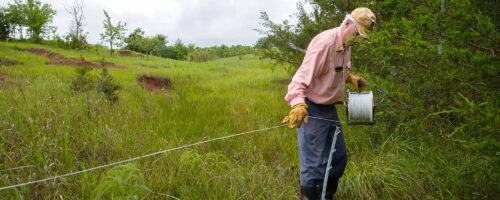
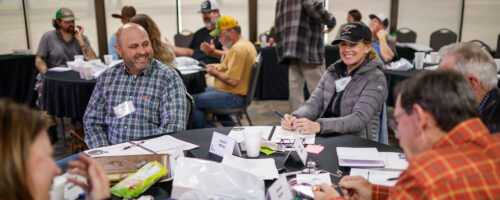
Comment